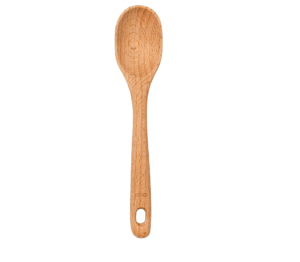Indulge in the rich flavors of Khachapuri, a traditional Georgian delight. This recipe takes you on a journey of taste, featuring fluffy bread filled with savory cheese. Perfectly baked to golden perfection, it’s a culinary experience you won’t want to miss.
Origin and history
The origins of khachapuri are deeply intertwined with the culinary traditions of Georgia, a country nestled in the Caucasus region. This iconic dish is a reflection of the country’s history, culture, and diverse influences.
The history of Khachapuri can be traced back to ancient times when the region was known for its agrarian lifestyle and abundant dairy production. The combination of locally available ingredients, such as cheese and dough, led to the creation of this delicious bread.
Khachapuri’s name (pronounced “cahh-cha-poo-ree” or “ha-cha-poo-ree” with a whispered, non-voiced rolling of the h similar to a pronunciation you’d find in Arabic) is derived from two Georgian words: “khacho” (curds) and “puri” (bread), which translates to cheese bread, signifying its essential components. Over the centuries, khachapuri has evolved and adapted to various cultural and culinary influences. It’s not only a staple in Georgian households but also a symbolic dish that holds a special place in celebratory events and gatherings.
As Georgia’s history saw invasions and interactions with neighboring countries and empires, khachapuri absorbed different elements. The Mingrelian and Imeretian versions of khachapuri, each with distinct ingredients and shapes, are a testament to this evolution.
While there are many regional iterations, the Adjaruli khachapuri is probably the most familiar to Americans; this recipe has been tweaked somewhat to include readily available ingredients. Made in an oval, with an egg added for the second half of the bake, it’s thought to evoke a boat, the ocean, and the sun, a testament to the region of Adjara’s location on the Black Sea.
Khachapuri even played a role in Georgian feasts and religious celebrations, further cementing its significance in the country’s culture. In recent years, it has gained international popularity, making its way onto menus around the world as a cherished and authentic Georgian dish.
In summary, khachapuri’s history is a tapestry of Georgian heritage, regional diversity, and cultural interactions. Its enduring appeal lies in its ability to connect people through its flavors and stories, making it a true culinary treasure of Georgia.
Tips and notes
Creating a successful khachapuri requires attention to detail and an understanding of the traditional techniques that make this dish truly special. Here are some essential tips and notes to ensure your khachapuri turns out delicious:
- Even if you have rapid activate yeast, we prefer to always proof it – meaning watch that it actually is activated. To do this simply mix the yeast into lukewarm (NOT HOT) water, let sit for five to ten minutes, and look that it is foamy. Working yeast is critical for perfect dough, and it is so easy to activate it in a recipe.
- Pay careful attention to your dough. Knead it thoroughly to achieve a soft and elastic consistency. Let the dough rest for the recommended time to allow it to rise properly. If you have a stand mixer at home, you can knead the dough with the mixer for about 3 minutes using the dough hook attachment.
- This recipe uses a dough that is very similar to pizza dough – so you can use pre-made pizza dough instead for lack of time.
- For the Adjaruli version, roll the Khachapuri into an oval shape (10″/25cm long and 6″/15cm wide). Then, fold over the longer sides of the oval, and seal them together at the two narrow ends to get a “boat” shape. To get a good seal on the boat edges, wet your fingers with a small amount of water, and pinch. The water will help seal the dough together. For more individualized boats, divide the dough into smaller pieces (2-3 rolls).
- The rule of thumb is that the amount of cheese needed for this kind of khachapuri is double the amount of flour you use to make the dough.
- The traditional cheeses used in native Georgian Adjaruli khachapuri are imeruli and sulguni, but they can be difficult to find. The most commonly suggested (and available) substitutes for these Georgian cheeses are mozzarella and feta (that’s what we’ve used in our recipe). In case you are missing one of these, substitute it with goat cheese, ricotta cheese, or whatever cheeses you have on hand. For an added zing to your cheese, add in cheddar or Monterey Jack cheese.
- Avoid pushing the cheese mixture into the dough. Instead, lightly sprinkle it on top. This will allow the dough to remain fluffy as it bakes.
- Ensure the egg is placed in the center and not too close to the edges to avoid spilling during baking and depending on your preferred doneness of the egg, you can bake the khachapuri for an additional couple of minutes.
- Although it’s not traditional to Khachapuri, you can get creative with your fillings by adding herbs, spices, chili flakes, hot sauce, or even cooked vegetables to enhance the flavor. However, keep the flavors balanced, so they complement rather than overpower the cheese.
- Preheat your oven to the recommended temperature. Bake until the crust is golden brown and the cheese mixture is bubbling. Be cautious not to overbake, as the cheese may become tough.
- For more fresh flavor, once baked garnish the top of the baked khachapuri with your favorite fresh herbs such as dill or parsley.
Serving
The best khachapuri is enjoyed straight out of the oven, when the cheese is still a melty and gooey boatload of goodness, and eggs are baked to your preference (hard or runny).
Khachapuri is traditionally served at breakfast as a brunch dish as it is very filling. However, it can also be easily served as a full meal for lunch or dinner with a side salad. It can also be served as an easy snack.
Accompany khachapuri with traditional Georgian sides like tkemali (cherry plum sauce), ajika (a spicy Georgian pepper sauce), salads, soups, Yogurt, Sour Cream, or pickled vegetables. This adds a burst of freshness to balance the rich cheese filling.
Variants
- Kiymali Pide;
- Marguerita pizza;
- Pissaladière (Onion tart);
- Imeruli Khachapuri;
- Calzone;
- Empanadas;
- Börek;
- Quiche;
- Stromboli;
- Spanakopita;
- …

Adjaruli Khachapuri Recipe: Fluffy Cheese-Filled Georgian Bread
Ingredients
Dough
- 500 g flour
- 10 g active yeast
- 15 g sugar (1 tbsp)
- 6 g salt
- 250 ml milk
- 15 ml oil (1 tbsp)
Filling
- 500 g mozzarella (or 50-50 mozzarella and feta)
- 2 tbsp Greek yogurt
- 30 g butter
- 5 eggs
Egg wash
- 1 egg yolk
Instructions
- In a mixing bowl, combine half of the warm milk. sugar, and yeast. Then, let it sit for about 5-10 minutes until it becomes foamy.
- In a large mixing bowl, mix the flour and the salt.
- Add the milk and yeast mixture to the flour. Gradually, add the remaining milk, stirring until a dough forms.
- Add the oil and transfer the dough to a floured surface and knead it for about 5-7 minutes until it's smooth and elastic.
- Place the dough in a lightly oiled bowl, cover it with a clean kitchen towel, and let it rise for 1-2 hours or until it doubles in size.
- Preheat the oven to 375°F (190°C).
- In a separate bowl, grate all the cheese.
- Mix the shredded cheese, Greek yogurt, and butter until well combined.
- Punch down the risen dough and divide it into five (5) equal portions.
- Roll out each portion into an oval shape (10"/25cm long, 6"/15cm wide, and ¼"/0.5cm thick) on a floured surface. Fold over the longer sides of the oval, and seal them together at the two narrow ends to get a "boat" shape. To get a good seal on the boat edges, wet your fingers with a small amount of water, and pinch.
- For a more generous recipe, you can fill the edge of the boat-shaped bread with cheese.
- Transfer the oval dough onto a baking sheet lined with parchment paper.
- Spread the cheese and egg mixture evenly over the dough, leaving a border around the edges.
- Brush the edges of the khachapuri with a beaten yolk egg.
- Bake in the preheated oven for about 15-20 minutes or until the bread is golden brown through.
- Remove from the oven, crack one egg into the center of the cheese filling, and cook for another 4-6 minutes or when the egg is cooked to your liking.
- Remove from the oven and immediately place small pieces of butter on top of the hot egg. Garnish with chopped parsley.
Cutting Board

Mixing Bowls

Sauce Bowls

Glass Measuring Cup

Wooden Small Spoon

Baking Sheet

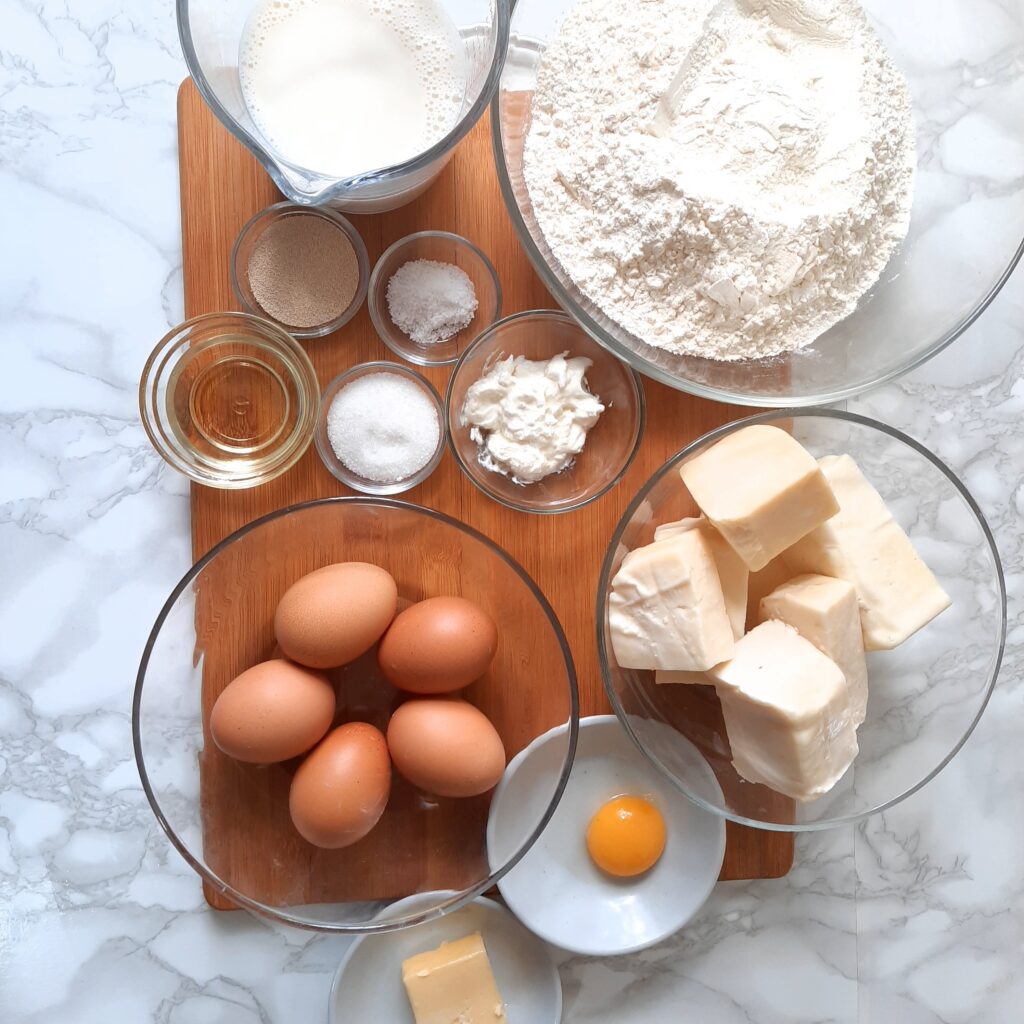





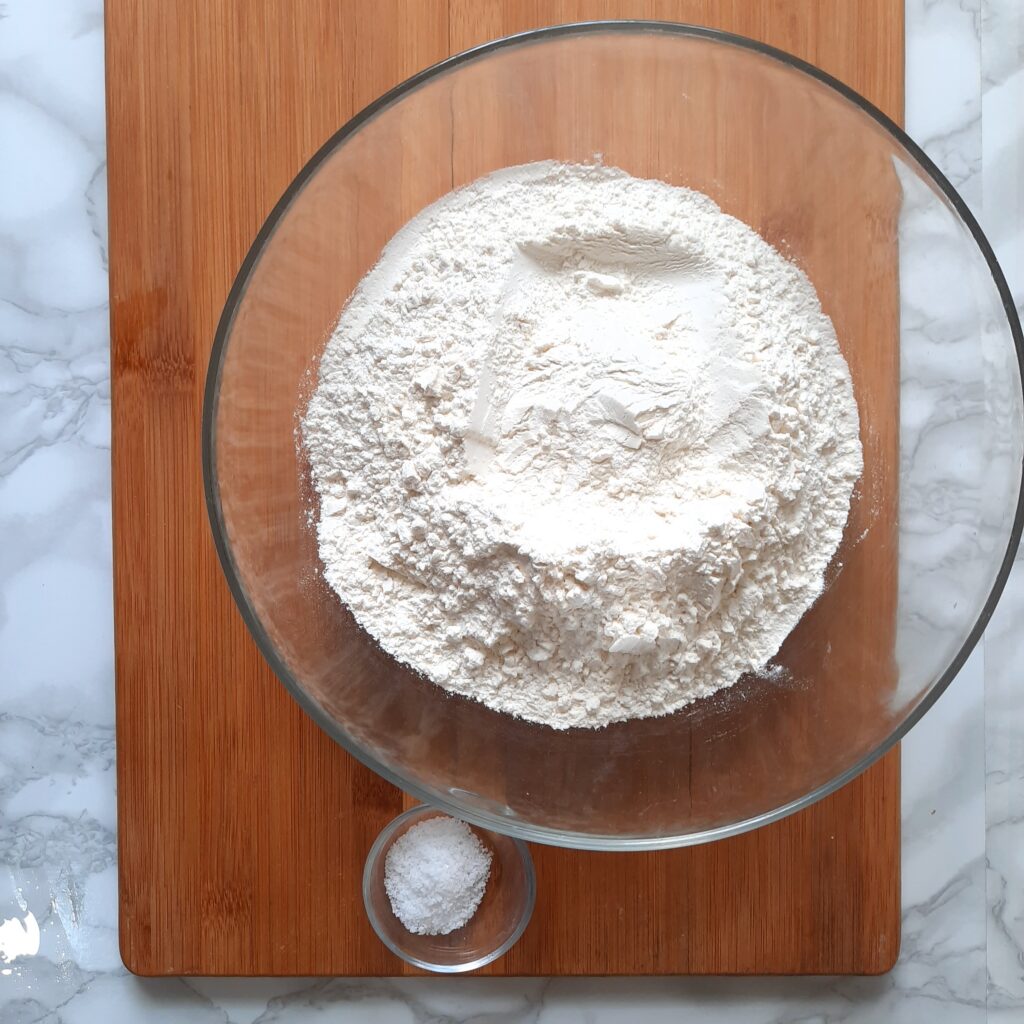











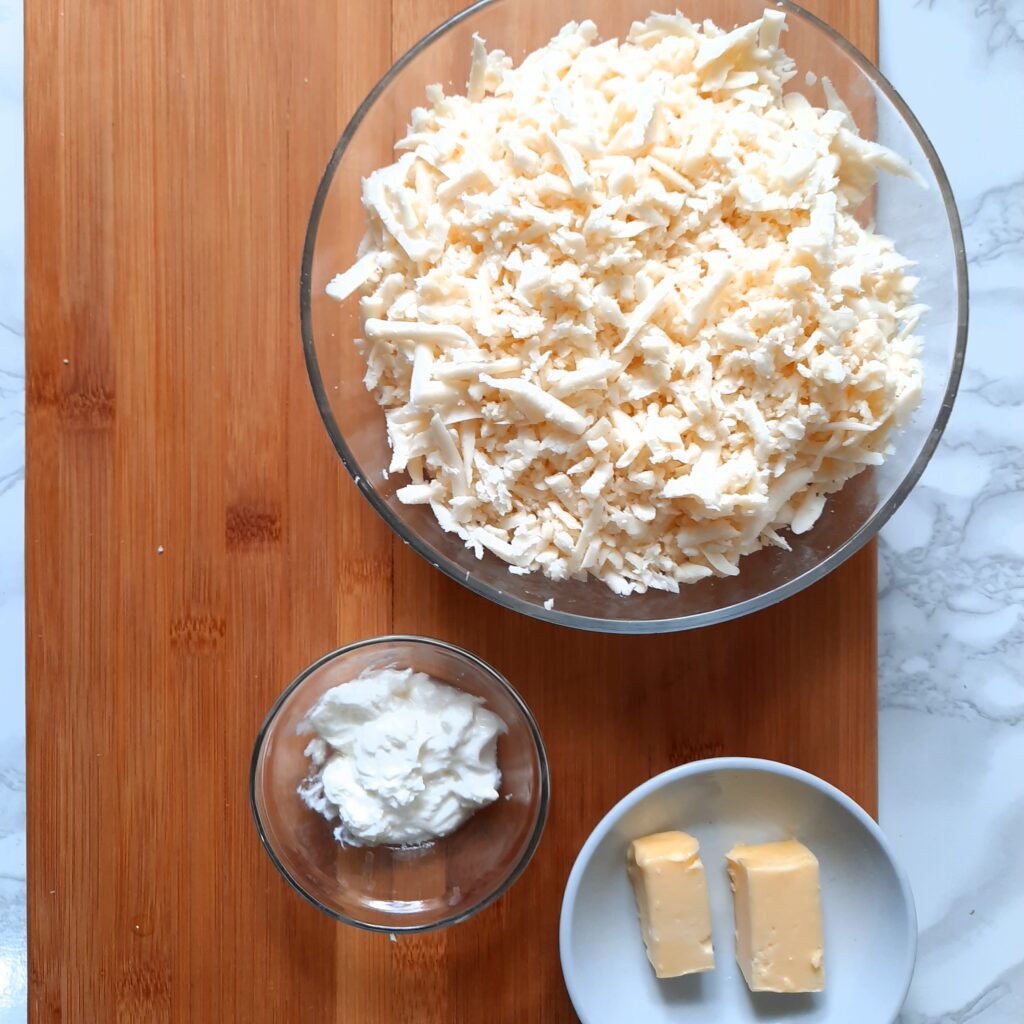











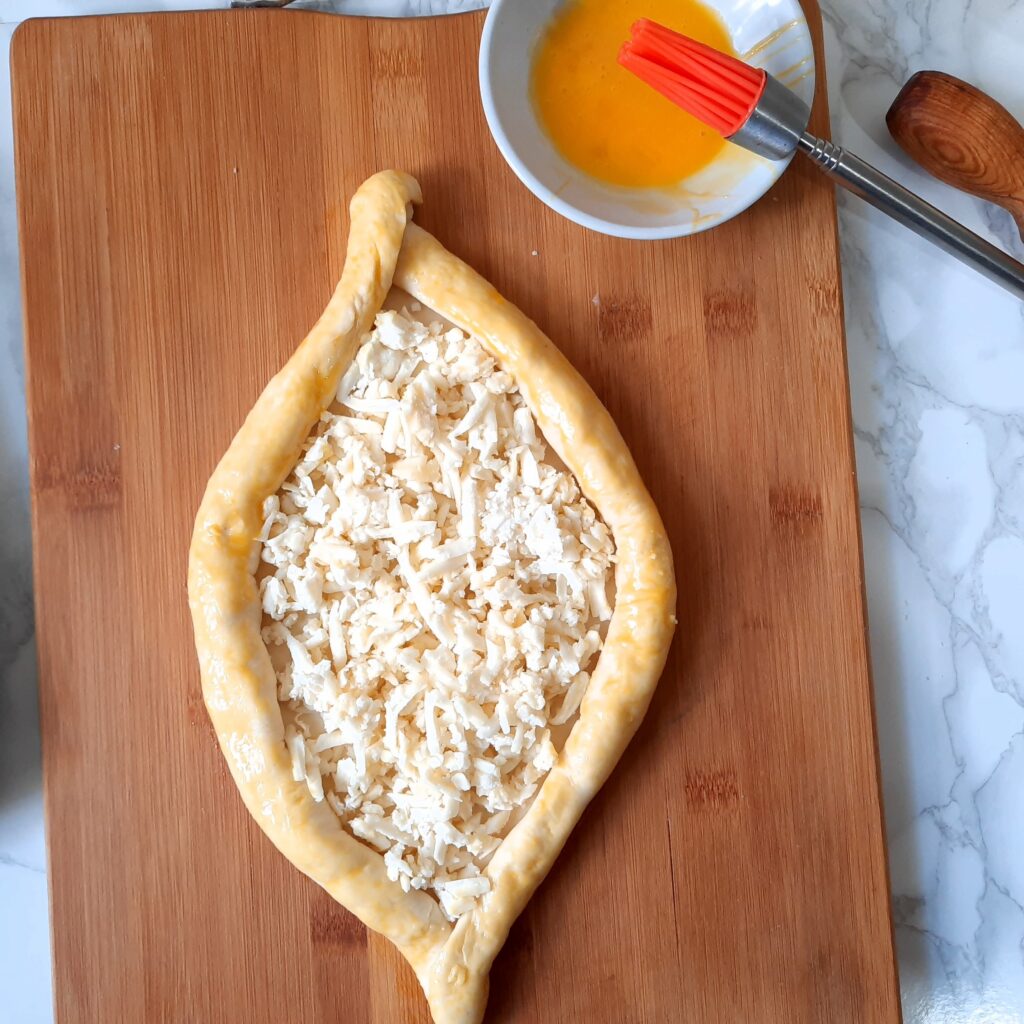




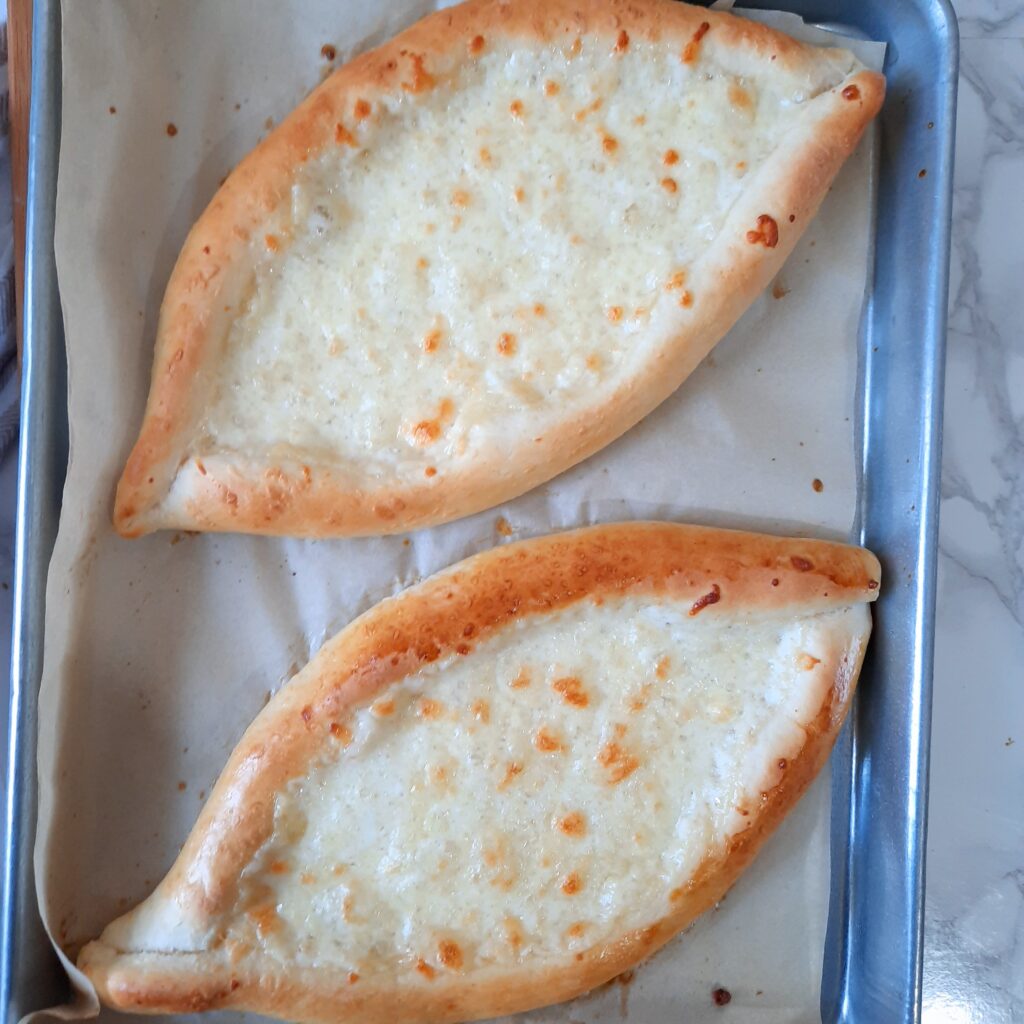











Disclaimer: As an Amazon Associate, I earn from qualifying purchases. This means that I may earn a commission from purchases made through the links on this blog post. However, please rest assured that this does not affect the price you pay for the products. The product recommendations and reviews provided on this blog post are based on my own experience and research. I only recommend products that I genuinely believe will be of value to my readers.






